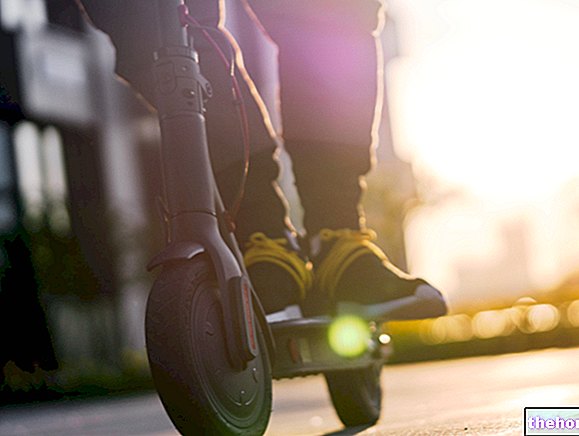Other risks and dangers of diving apnea

Risks and dangers associated with the marine environment
The freediver must consider himself a "guest" of the environment in which he immerses himself; therefore, the first rule is to respect the sea and weather conditions and be careful to avoid the risks and dangers that surround it, including the water temperature, sudden changes in sea weather conditions, and those relating to surface and / or deep currents. .
Risks and dangers associated with marine flora and fauna
According to the place where the freediver chooses to dive (lake, quarry, Mediterranean, Indian Ocean, Caribbean, etc.) he must know which animals should be feared and avoided. In the Mediterranean basin, where sharks are almost harmless, there are other creatures capable of causing damage, even serious:
- Jellyfish, anemones and stinging burns: they are generally not very serious. They can be effectively treated with the application of special ointments and (to avoid misunderstandings dictated by popular legends) NOT with urine or pure ammonia.
- Bites of weever, race and redfish: according to the size of the animal, the depth of the bite and the injection time, the damage can take on more or less importance. they can compromise the management of the dive causing shock or fainting or in any case increasing the risk of drowning. As soon as possible it is advisable to apply compresses of water as HOT AS POSSIBLE, in order to denature the protein toxins.
Risks and dangers related to human beings
Last but not least (indeed!), The group of risks and dangers related to inappropriate behavior of other people (besides us) who habitually or occasionally frequent the sea or lakes.
- Vessels and boats: it is not difficult to understand how risky it can be for a freediver (who rises and falls from the surface to breathe) to come across an inexperienced or oblivious to the rules nautical driver. The freediver MUST always be equipped with a signaling buoy in order to increase his visibility to boats and boats, but often this is not enough. In the event that the propeller of a motor, the bulb of a sailboat , the keel or the keel of any means collided with the bather, the consequences could be irreparable. It is advisable to equip yourself with clearly visible buoys and NEVER go further than 50 meters from them, to dive ONLY away from the trajectories of the boats, to keep attention and always plan an emergency plan for accidents.
- Nets, trammel lines and trolling lines: another extremely risky and underestimated factor is the potential danger induced by fishermen's nets and lines. First of all it is advisable to dive far from the marked routes; secondly, it is advisable to pay attention to the abusive ones and to have AT LEAST a very sharp knife (preferably two) to hold on the ankle, arm or belt. Getting caught in one of them during the dive could make it impossible to re-emerge, resulting in death by drowning. NB: in case of nets or lines not reported or abandoned it is advisable to inform the competent authorities (harbor master, finance, carabinieri, etc.).
- Armed and dangerous underwater fishermen: finally, the least probable but not impossible eventuality: being hit by the arrow of a speargun. exactly the opposite. Going around routine itineraries for fishing-sub-freedivers is a "habit that can be maintained as long as two fundamental rules are always respected: 1. Remember to signal your presence with the buoy and stay 50m from it; 2. Respect your position of the spearfisher and remember that he too can move away up to 50m from his own marker buoy, therefore, it is better to stay well out of his range of action. Obviously, the possibility that some transgressor loses or leaves the own buoy tread elsewhere (perhaps due to current or wave needs but still illegal) and move beyond the distance imposed by the regulations. In this case, we should totally trust in the intelligence and experience of the offender.
To minimize the possibility of unfortunate episodes or complications related to the risks and dangers of scuba diving, it is advisable to attend a training course for beginners; all the techniques and strategies for total prevention will be illustrated in the teaching session. in order to drastically reduce the possibility of compromising one's (and not only) state of health, increasing the general safety of the discipline.
Other articles on "Underwater Apnea - Risks and Dangers - Flora and Fauna"
- Underwater Apnea - Pre-syncopal state or Samba and Black-out
- Underwater Apnea - Risks and Dangers




























